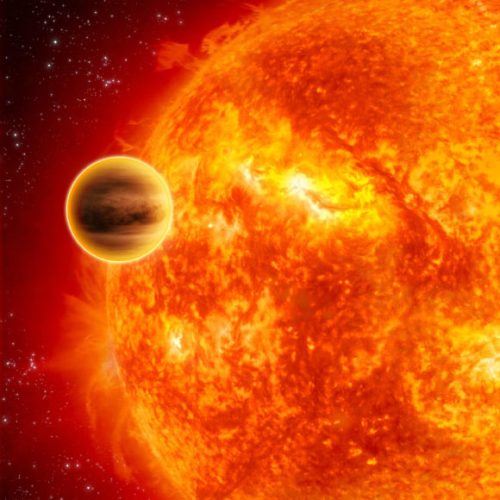
NASA’s planet-hunting satellite TESS, or Transiting Exoplanet Survey Satellite, has made another intriguing discovery. This time, it’s located a planet somewhere where it shouldn’t be, right in the middle of a zone in which any planet should have been annihilated by its star.
The star HD 203949 is located 257 light-years away and is a K2-type giant star, slightly cooler than our sun. Traveling around this star is a large planet, HD 203949b, which is 8.2 times the mass of Jupiter and in a 184-day circular orbit.
So far, so typical. But there’s something odd about HD 203949b because it should have been engulfed by its star long ago. The boundaries of a star, called its envelope, expand and contract over time. When the giant star HD 203949 was younger in its red giant phase, its envelope should have covered the planet and destroyed it — and yet the planet is still there.
The researchers investigated this mystery more closely using computer simulations. They came up with a theory that the planet must have started out further away from the star and been drawn closer toward it over time.
“We determined how this planet could have reached its current location, and to do so whether or not the planet had to survive engulfment within the stellar envelope of the red giant star,” co-author Dr. Dimitri Veras explained in a statement. “The work sheds new light on the survivability of planets when their parent stars begin to die, and might even reveal new aspects of tidal physics.”
This discovery of a planet shifting its orbit over time shows how complex the relationships within planetary systems can be. “This study is a perfect demonstration of how stellar and exoplanetary astrophysics are linked together,” co-author Dr. Vardan Adibekyan said in the same statement. “Stellar analysis seems to suggest that HD 203949 is too evolved to still host a planet at such a short orbital distance, while from the exoplanet analysis we know that the planet is there.”
“The solution to this scientific dilemma is hidden in the simple fact that stars and their planets not only form but also evolve together,” Dr. Adibekyan continued. “In this particular case, the planet managed to avoid engulfment.”
The findings are published in the Astrophysical Journal.
Editors' Recommendations
- Watch how space station astronauts get ready for bed
- Astronomers spot a vast, mysterious circle in space
- Chandra investigates an X-ray mystery from epic kilonova
- Hints of a planet in the habitable zone of a dead star
- Astronomers spot a new planet orbiting our neighboring star